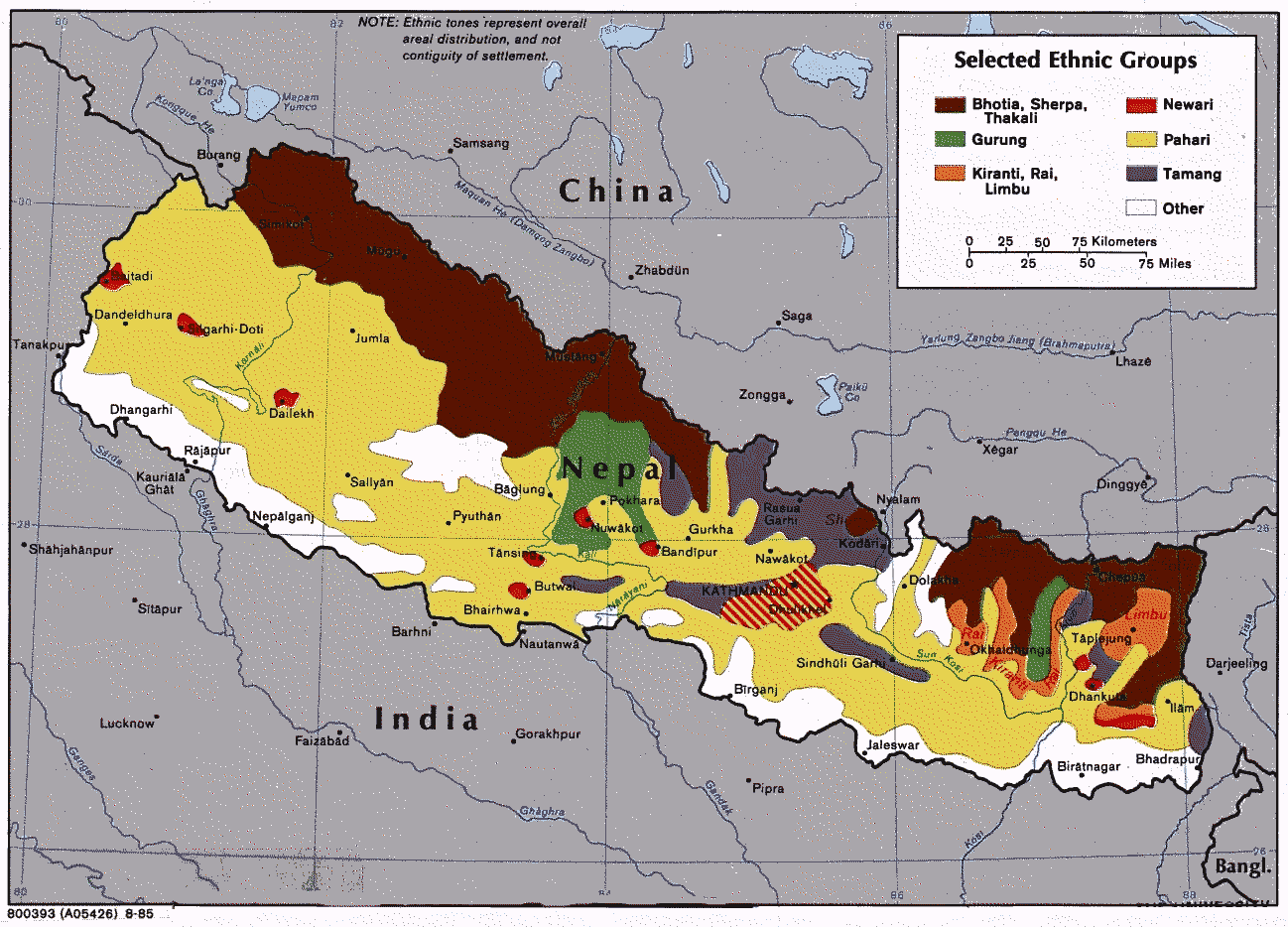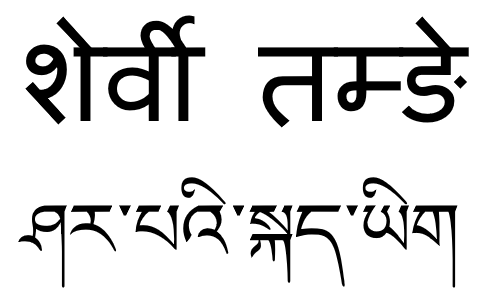|
Chisankhugadhi Rural Municipality
Chisankhugadhi ( ne, चिशंखुगढी गाउँपालिका) is a rural municipality ( gaunpalika) out of seven rural municipality located in Okhaldhunga District of Province No. 1 of Nepal. There are a total of 8 municipalities in Okhaldhunga in which 1 is urban and 7 are rural. According to Ministry of Federal Affairs and Local Developme Chisankhugadhi has an area of and the total population of the municipality is 15196 as of Census of Nepal 2011. Kuibhir, Pokhare, Diyale, Ratmata, Serna, Bhadaure and Mamkha which previously were all separate Village development committee merged to form this new local level body. Fulfilling the requirement of the new Constitution of Nepal 2015, Ministry of Federal Affairs and Local Development replaced all old VDCs and Municipalities into 753 new local level body (Municipality). The rural municipality is divided into total 8 wards and the headquarter of this newly formed rural municipality is situated in Serna. De ... [...More Info...] [...Related Items...] OR: [Wikipedia] [Google] [Baidu] |
Rural Municipalities Of Province No
In general, a rural area or a countryside is a geographic area that is located outside towns and cities. Typical rural areas have a low population density and small settlements. Agricultural areas and areas with forestry typically are described as rural. Different countries have varying definitions of ''rural'' for statistical and administrative purposes. In rural areas, because of their unique economic and social dynamics, and relationship to land-based industry such as agriculture, forestry and resource extraction, the economics are very different from cities and can be subject to boom and bust cycles and vulnerability to extreme weather or natural disasters, such as droughts. These dynamics alongside larger economic forces encouraging to urbanization have led to significant demographic declines, called rural flight, where economic incentives encourage younger populations to go to cities for education and access to jobs, leaving older, less educated and less wealthy populati ... [...More Info...] [...Related Items...] OR: [Wikipedia] [Google] [Baidu] |
Diyale
Diyale is a village development committee in Okhaldhunga District in the Sagarmatha Zone of mid-eastern Nepal. At the time of the 1991 Nepal census The 1991 Nepal census was a widespread national census conducted by the Nepal Central Bureau of Statistics. Working with Nepal's Village Development Committees at a district level, they recorded data from all the main towns and villages of each ... it had a population of 2510 living in 470 individual households.. References External linksUN map of the municipalities of Okhaldhunga District Populated places in Okhaldhunga District {{Okhaldhunga-geo-stub ... [...More Info...] [...Related Items...] OR: [Wikipedia] [Google] [Baidu] |
Kirati Languages
The Kiranti languages are a major family of Sino-Tibetan languages spoken in Nepal and India (notably Sikkim, Darjeeling, Kalimpong, and Kumai) by the Kirati people. External relationships George van Driem had formerly proposed that the Kiranti languages were part of a Mahakiranti family, although specialists are not completely certain of either the existence of a Kiranti subgroup or its precise membership. LaPolla (2003), though, proposes that Kiranti may be part of a larger "Rung" group. Languages There are about two dozen Kiranti languages. The better known are Limbu, Sunuwar, Bantawa Rai, Chamling Rai, Khaling Rai, Bahing Rai, Yakkha language, Vayu, Dungmali Rai, Lohorung Rai and Kulung Rai. Kiranti verbs are not easily segmentable, due in large part to the presence of portmanteau morphemes, crowded affix strings, and extensive (and often nonintuitive) allomorphy. Classification Overall, Kiranti languages are: * Limbu * Eastern Kiranti ** Greater Yakkha ... [...More Info...] [...Related Items...] OR: [Wikipedia] [Google] [Baidu] |
Thulung Language
Thulung or Thulung luwa () is a Kirati languages or Thulung language spoken in parts of Nepal and Sikkim Sikkim (; ) is a state in Northeastern India. It borders the Tibet Autonomous Region of China in the north and northeast, Bhutan in the east, Province No. 1 of Nepal in the west and West Bengal in the south. Sikkim is also close to the Silig .... References Sources * * External links *Allen, N.JSketch of Thulung Grammar: with three texts and a glossary Cornell East Asia Series. Ithaca, New York, 1975. (Full text.) Languages of Sikkim Languages of Nepal Kiranti languages Languages of Province No. 1 {{st-lang-stub ... [...More Info...] [...Related Items...] OR: [Wikipedia] [Google] [Baidu] |
Tamang Language
Tamang (Devanagari: तामाङ; ''tāmāng'') is a term used to collectively refer to a dialect cluster spoken mainly in Nepal, Sikkim, West Bengal (Darjeeling) and North-Eastern India. It comprises Eastern Tamang, Northwestern Tamang, Southwestern Tamang, Eastern Gorkha Tamang, and Western Tamang. Lexical similarity between Eastern Tamang (which is regarded as the most prominent) and other Tamang languages varies between 81% to 63%. For comparison, lexical similarity between Spanish and Portuguese, is estimated at 89%. Ethnologue report for Spanish Dialects ''Ethnologue'' divides Tamang into the following varieties due to mutual unintelligibility. *Eastern Tamang: 759,000 in Nepal (2000 WCD). Population total all countries: 773,000. Sub-dialects are as follows. **Outer-Eastern Tamang (Sailung Tamang) **Central-Eastern Tamang (Temal Tamang) **Southwestern Tamang (Kath-Bhotiya, Lama Bhote, Murmi, Rongba, Sain, Tamang Gyoi, Tamang Gyot, Tamang Lengmo, Tamang Tam) *Western T ... [...More Info...] [...Related Items...] OR: [Wikipedia] [Google] [Baidu] |
Sherpa Language
Sherpa (also Sharpa, Xiaerba, or Sherwa) is a Tibetic language spoken in Nepal and the Indian state of Sikkim, mainly by the Sherpa. The majority speakers of the Sherpa language live in the Khumbu region of Nepal, spanning from the Chinese (Tibetan) border in the east to the Bhotekosi River in the west. About 200,000 speakers live in Nepal (2001 census), some 20,000 in Sikkim (1997) and some 800 in Tibetan Autonomous Region (1994). Sherpa is a subject-object-verb (SOV) language. Sherpa is predominantly a spoken language, although it is occasionally written using either the Devanagari or Tibetan script. Phonology Sherpa is a tonal language. Sherpa has the following consonants: Consonants * Stop sounds can be unreleased in word-final position. * Palatal sounds can neutralize to velar sounds when preceding . * can become a retroflex nasal when preceding a retroflex stop. * can have an allophone of when occurring in fast speech. Vowels * Vowel sounds have the ... [...More Info...] [...Related Items...] OR: [Wikipedia] [Google] [Baidu] |
Bahing Language
Bahing ancestors named Paiwa, Dungmowa, Rukhusalu, Waripsawa, Timriwa, Dhimriwa, Nayango, Dhayango, Khaliwa/Khaluwa, Rendukpa/Rendu, Rungbu/Rumdali/Diburcha/Thamrocha) is a language spoken by 11,658 people (2011 census) of the Bahing ethnic group in Nepal. It belongs to the family of Kiranti languages, a subgroup of Sino-Tibetan. The group Rumdali is also known as Nechali among some of them. Names ''Ethnologue'' lists the following alternate names for Bahing: Baying, Ikke lo, Kiranti-Bahing, Pai Lo, Radu lo. Procha lo Geographical distribution Bahing is spoken in the following locations of Nepal (''Ethnologue''). *Northeastern Okhaldhunga District, Sagarmatha Zone: Harkapur, Ragdip, Bigutar, Baruneswor, Okhaldhunga, Rumjatar, Barnalu, Mamkha, Ratmate, Serna, Diyale, and Bhadaure VDC's (''Rumdali dialect'') *Mid-southeastern Okhaldhunga District: Ketuke, Moli, Waksa, and Ubu VDC's (''Tolocha dialect'') *Southern tip of Solukhumbu District: Necha Batase and Salyan VD ... [...More Info...] [...Related Items...] OR: [Wikipedia] [Google] [Baidu] |
Magar Language
Magar Dhut ( ne, मगर ढुट, ) is a Sino-Tibetan Language spoken mainly in Nepal, Southern Bhutan, and in Darjeeling and Sikkim, India, by the Magar people. It is divided into two groups (Eastern and Western) and further dialect divisions give distinct tribal identity. In Nepal 788,530 people speak the language. While the government of Nepal developed Magar language curricula, as provisioned by the constitution, the teaching materials have never successfully reached Magar schools, where most school instruction is in the Nepali language. It is not unusual for groups with their own language to feel that the "mother-tongue" is an essential part of identity. The Dhut Magar language is sometimes lumped with the Magar Kham language spoken further west in Bheri, Dhaulagiri, and Rapti zones. Although the two languages share many common words, they have major structural differences and are not mutually intelligible. Geographical distribution Western Magar Western Magar ... [...More Info...] [...Related Items...] OR: [Wikipedia] [Google] [Baidu] |
Nepali Language
Nepali (; , ) is an Indo-Aryan language native to the Himalayas region of South Asia. It is the official, and most widely spoken, language of Nepal, where it also serves as a '' lingua franca''. Nepali has official status in the Indian state of Sikkim and in the Gorkhaland Territorial Administration of West Bengal. It is spoken by about a quarter of Bhutan's population. Nepali also has a significant number of speakers in the states of Arunachal Pradesh, Assam, Himachal Pradesh, Manipur, Meghalaya, Mizoram and Uttarakhand. In Myanmar it is spoken by the Burmese Gurkhas. The Nepali diaspora in the Middle East, Brunei, Australia and worldwide also use the language. Nepali is spoken by approximately 16 million native speakers and another 9 million as a second language. Nepali is commonly classified within the Eastern Pahari group of the Northern zone of Indo-Aryan. The language originated from the Sinja Valley, Karnali Province then the capital city of the Khasa K ... [...More Info...] [...Related Items...] OR: [Wikipedia] [Google] [Baidu] |
List Of Cities In Nepal
Cities and towns in Nepal are Municipal corporation, incorporated under municipality. A municipality in Nepal is a sub-unit of a district. The Government of Nepal has set-out a minimum criteria for municipalities. These criteria include a certain population, infrastructure and revenues. Presently, there are 293 municipalities in Nepal among which 6 are metropolis, 11 are sub-metropolis and 276 are municipal councils. Other than that there are 460 rural municipalities totaling 753 local level government within Nepal. Kathmandu, the capital, is also the largest city. In terms of area, Pokhara is the largest Metropolitan City, metropolitan city covering a subtotal of 464.28 km2 while Lalitpur, Nepal, Lalitpur is the smallest, with an area of 36.12 km2. Ghorahi is the largest sub-metropolitan city with an area of 522.21 km2 where as Dhangadhi is the largest sub-metropolitan city by a population of 204,788. Budhanilkantha with a population of 179,688 is the largest m ... [...More Info...] [...Related Items...] OR: [Wikipedia] [Google] [Baidu] |
Constitution Of Nepal 2015
Constitution of Nepal 2015 ( ne, नेपालको संविधान २०७२) is the present governing Constitution of Nepal. Nepal is governed according to the Constitution which came into effect on 20 September 2015, replacing the Interim Constitution of 2007. The constitution of Nepal is divided into 35 parts, 308 Articles and 9 Schedules. The Constitution was drafted by the Second Constituent Assembly following the failure of the First Constituent Assembly to produce a constitution in its mandated period after the devastating earthquake in April 2015. The constitution was endorsed by 90% of the total legislators. Out of 598 Constituent Assembly members, 538 voted in favour of the constitution while 60 people voted against it, including a few Terai-based political parties which refrained from the voting process. Its institutions were put in place in 2010 and 2018 through a series of direct and indirect elections in all governing levels. History The Interim Con ... [...More Info...] [...Related Items...] OR: [Wikipedia] [Google] [Baidu] |
Village Development Committee (Nepal)
A village development committee ( ne, गाउँ विकास समिति; ''gāum̐ vikās samiti'') in Nepal was the lower administrative part of its Ministry of Federal Affairs and Local Development. Each district had several VDCs, similar to municipalities but with greater public-government interaction and administration. There were 3,157 village development committees in Nepal. Each village development committee was further divided into several wards ( ne, वडा) depending on the population of the district, the average being nine wards. Purpose The purpose of village development committees is to organise village people structurally at a local level and creating a partnership between the community and the public sector for improved service delivery system. A village development committee has status as an autonomous institution and authority for interacting with the more centralised institutions of governance in Nepal. In doing so, the village development co ... [...More Info...] [...Related Items...] OR: [Wikipedia] [Google] [Baidu] |




